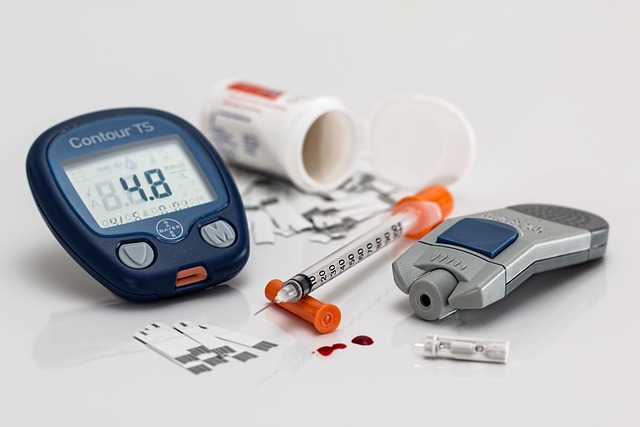Simplifying Diabetes Management: How Insulin Pumps Are Transforming Lives
Living with diabetes requires constant attention to blood sugar levels, medication timing, and lifestyle adjustments. For many individuals, traditional insulin injection methods can be challenging to manage effectively. Insulin pump therapy has emerged as a transformative solution, offering greater flexibility and improved glucose control for those managing this chronic condition.

Diabetes management has evolved significantly over recent decades, with technological innovations providing patients with more effective tools to maintain healthy blood sugar levels. Among these advancements, insulin pumps have become increasingly popular, offering a more automated and precise approach to insulin delivery compared to multiple daily injections. These devices have fundamentally changed how many people with diabetes navigate their daily routines, providing both medical benefits and improved quality of life.
Understanding Insulin Pumps: Mechanism and Benefits
An insulin pump is a small, computerized device that delivers insulin continuously throughout the day and night. Unlike traditional injection methods, the pump mimics the pancreas by providing a steady baseline of insulin, known as basal insulin, with additional doses delivered at mealtimes or when blood sugar levels rise. The device consists of a small reservoir filled with rapid-acting insulin, a thin tube called a cannula that sits under the skin, and a computerized control system that allows users to program and adjust insulin delivery.
The primary benefits of insulin pump therapy include improved blood sugar control, reduced risk of hypoglycemia, and greater flexibility in meal timing and physical activity. Studies have shown that pump users often achieve lower HbA1c levels compared to those using multiple daily injections. The precision of insulin delivery, measured in increments as small as 0.025 units, allows for fine-tuning that is impossible with traditional syringes or pens. Additionally, the ability to program different basal rates throughout the day addresses the natural variations in insulin needs that occur during sleep, exercise, and periods of stress.
Managing Diabetes: The Role of Continuous Glucose Monitoring
Continuous glucose monitoring systems have revolutionized diabetes management by providing real-time information about glucose levels and trends. When paired with insulin pumps, these sensors create an integrated system that offers unprecedented insight into how food, activity, and insulin affect blood sugar. CGM devices measure glucose levels in the interstitial fluid every few minutes, transmitting data wirelessly to the pump or a separate receiver.
The combination of insulin pumps and CGM technology enables features such as automatic insulin suspension when glucose levels drop too low, predictive alerts before hypoglycemia occurs, and hybrid closed-loop systems that automatically adjust basal insulin delivery based on glucose readings. This integration reduces the mental burden of constant diabetes management and helps prevent dangerous blood sugar fluctuations. Many users report improved sleep quality, knowing that their system will alert them to potential issues overnight.
Assessing the Risks: Potential Complications of Insulin Pump Therapy
While insulin pumps offer numerous advantages, they are not without risks and potential complications. One significant concern is the risk of diabetic ketoacidosis, which can develop rapidly if the pump malfunctions or the infusion site fails. Because pumps use only rapid-acting insulin with no long-acting backup, any interruption in insulin delivery can lead to dangerous situations within hours. Users must remain vigilant about checking their blood sugar regularly and recognizing signs of pump failure.
Other potential complications include skin infections or irritation at the infusion site, especially if sites are not rotated frequently enough. The cannula can become kinked or dislodged, preventing proper insulin delivery without obvious symptoms. Some individuals experience weight gain when starting pump therapy due to improved glucose control and reduced glucose loss through urine. There is also a learning curve associated with pump use, requiring comprehensive training and ongoing education to manage the technology effectively. Technical issues such as battery failures, software glitches, or damaged tubing can create challenges that require immediate problem-solving skills.
Expert Insights: Choosing the Right Insulin Pump for Individual Needs
Selecting an appropriate insulin pump involves considering multiple factors, including lifestyle, technology preferences, insurance coverage, and individual diabetes management goals. Healthcare providers typically evaluate candidates based on their ability to count carbohydrates accurately, willingness to check blood sugar frequently, and commitment to learning the technical aspects of pump operation. Not everyone with diabetes is a suitable candidate for pump therapy, and the decision should be made collaboratively with an endocrinologist or diabetes educator.
When comparing different pump models, important features to consider include reservoir size, waterproof capabilities, screen readability, button versus touchscreen controls, and compatibility with CGM systems. Some pumps are tubeless patch pumps that adhere directly to the skin, while others have tubing connecting the pump device to the infusion site. The choice often depends on personal preference, activity level, and comfort with wearing medical devices. Insurance coverage varies significantly, and understanding the financial implications is essential before committing to a specific system. Most pumps require replacement every four years, with ongoing costs for supplies including infusion sets, reservoirs, and adhesive patches.
Lifestyle Changes: Integrating Insulin Pumps into Daily Routines
Adapting to life with an insulin pump requires adjustments to daily habits and routines, but most users find that the flexibility gained outweighs the initial challenges. Physical activities such as swimming, showering, and exercise may require temporary pump disconnection or adjustments to basal rates. Many modern pumps are waterproof, eliminating concerns about water exposure during daily activities. Clothing choices may need modification to accommodate the device, though most pumps are small enough to be discreet under normal clothing.
Traveling with an insulin pump necessitates additional planning, including carrying backup supplies, understanding how to manage time zone changes, and navigating airport security procedures. Most security personnel are familiar with medical devices, but carrying a letter from a healthcare provider can facilitate smoother interactions. Intimate relationships and body image concerns are common considerations, particularly for younger users or those newly diagnosed. Support groups and online communities provide valuable resources for addressing these personal aspects of pump therapy. Over time, most users report that the pump becomes a natural part of their daily routine, with the benefits far exceeding any inconveniences.
Conclusion
Insulin pump therapy represents a significant advancement in diabetes management, offering improved glucose control, enhanced flexibility, and better quality of life for many individuals. While the technology requires commitment, education, and ongoing attention to potential complications, the benefits have transformed diabetes care for countless people worldwide. As technology continues to evolve, with increasingly sophisticated automated insulin delivery systems on the horizon, the future of diabetes management looks increasingly promising. For those considering pump therapy, working closely with healthcare providers to assess individual needs and circumstances remains essential to achieving optimal outcomes.
This article is for informational purposes only and should not be considered medical advice. Please consult a qualified healthcare professional for personalized guidance and treatment.




